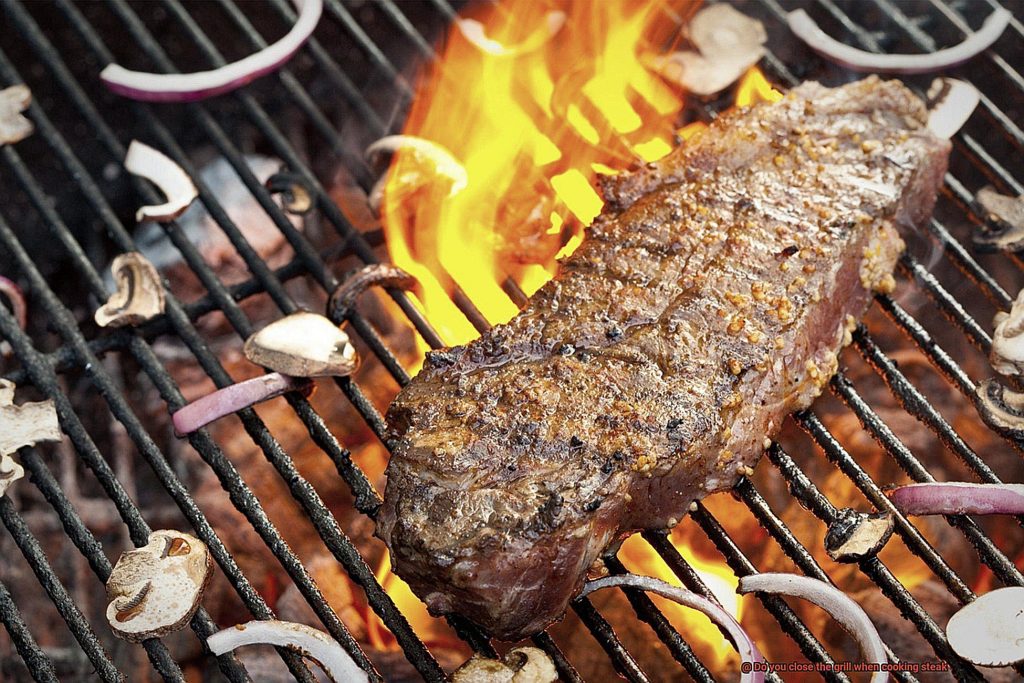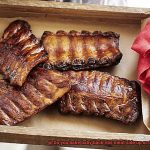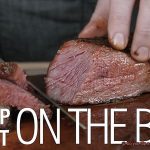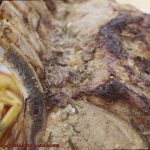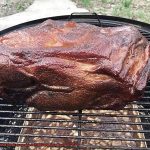Sink your teeth into a sizzling, juicy steak fresh off the grill – it’s a culinary experience like no other. But here’s the burning question: should you keep the grill lid closed or wide open while cooking? Join us as we venture into the smoky world of grilling to uncover the secrets of achieving steak perfection.
Grilling is a battleground for food lovers, igniting fiery debates and unwavering opinions. Some swear by closing the lid, while others stand firm in their belief that an open flame is the key to success. As the smoke swirls around us, we’ll bring clarity to this age-old dilemma with a casual yet informative approach.
To understand whether closing the lid makes a difference, we must first delve into two fundamental grilling techniques: direct heat and indirect heat. Direct heat involves cooking right over the flames, while indirect heat means positioning your steak away from direct contact with fire. These techniques are at the heart of mastering the art of grilling.
Whether you’re a seasoned grill master or just starting on your carnivorous journey, this blog post will be your gateway to achieving restaurant-quality results in your own backyard. Together, we’ll explore when to close the grill lid and when to leave it wide open, honing your skills as a true grilling virtuoso. Get ready for a mouthwatering adventure.
Contents
What Does Closing the Grill Do?
Closing the grill when cooking steak has several benefits that can enhance the cooking process and result in a mouthwatering, juicy steak. Let’s dive into what exactly happens when you close the grill:
- Heat Distribution: Closing the grill creates a convection effect, where scorching hot air swirls around the steak from all angles. This ensures that every inch of your steak receives equal heat, leaving no room for overcooked or undercooked spots.
- Moisture Retention: Picture this – closing the grill forms a cozy cocoon around your steak, locking in all those precious juices. This means that the natural moisture within the meat doesn’t evaporate too quickly, resulting in a succulent and flavorful steak. Thick cuts of steak reap the most benefits from this method as they require more time to cook and need that extra protection to stay moist.
- Flavor Development: Closing the grill creates an oven-like environment, giving your steak the chance to reach its full potential. The searing heat and trapped moisture work together to create a caramelization masterpiece on the exterior of your steak. Those tantalizing crusty sear marks are a testament to the explosion of flavors happening inside.
But hold up – closing the grill isn’t always necessary or ideal. Thinner cuts of steak or those that prefer a quicker cooking time may prefer an open grill. This allows for direct heat exposure and faster cooking, resulting in a different texture and flavor profile.
When deciding whether to close or leave the grill open, consider factors like personal preference, thickness of the cut, and desired outcome. Are you craving a perfectly charred exterior? Or perhaps you want a tender medium-rare center with a gentle kiss of grill marks? By experimenting with different methods, you’ll find your grilling sweet spot, where open and closed techniques dance harmoniously to create steak perfection.
Pros of Closing the Grill
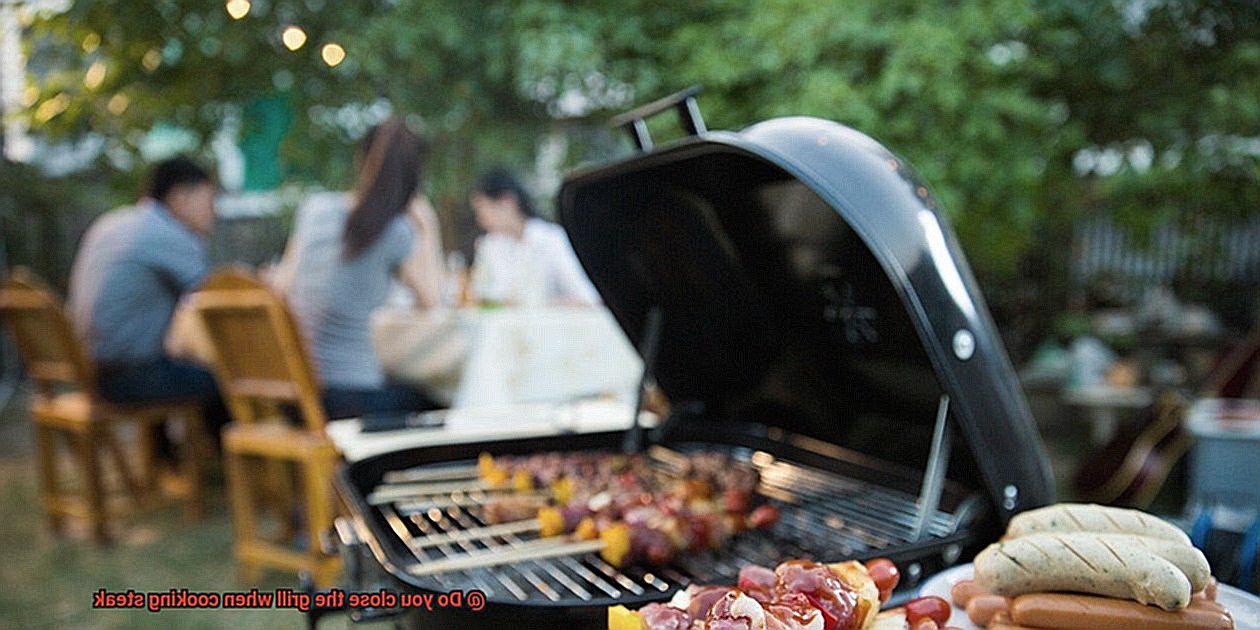
Closing the grill when cooking steak has numerous advantages that can take your grilling skills to the next level. Let’s explore the pros of closing the grill and uncover how it can elevate your steak-cooking experience.
One benefit of closing the grill is heat retention. By sealing the grill, you create an enclosed environment that traps the heat inside. This creates an oven-like effect, ensuring even heat distribution around the steak. The outcome is a perfectly cooked steak with consistent doneness from edge to edge.
Closing the grill also enhances juiciness and flavor. By keeping the grill closed, you lock in the natural juices of the steak. As the steak cooks, these juices are released, but with the grill closed, they are trapped inside. This means that every mouthwatering bite of your steak will be moist, tender, and bursting with flavor.
Another advantage is faster cooking time. Closing the grill enhances heat distribution, resulting in a more efficient cooking process. This is especially beneficial when dealing with thicker cuts of steak. So you can savor a juicy steak without spending an excessive amount of time at the grill.
If you’re a fan of a beautifully seared crust on your steak, closing the grill is your ticket to perfection. The high heat within the closed grill helps caramelize the sugars and proteins on the surface of the steak, creating a crust that adds depth and complexity to every delectable bite.
Closing the grill also prevents flare-ups. Fat drippings from the steak can cause flare-ups on an open grill, leading to uneven cooking and undesirable charring. By closing the grill, you minimize these flare-ups and ensure a controlled cooking process, resulting in a flawlessly cooked steak without any unpleasant surprises.
Furthermore, closing the grill allows for versatility in cooking techniques. While grilling with an open lid is ideal for certain cuts of steak that require direct heat, closing the grill enables indirect grilling as well. This is particularly useful when cooking larger cuts of steak or experimenting with smoking or slow-cooking methods.
Cons of Closing the Grill
Closing the grill when cooking steak certainly has its benefits, as discussed in the previous section. However, it’s important to consider the potential drawbacks before deciding whether to close the grill. Here are some cons to keep in mind:
Firstly, closing the grill can lead to slower cooking times. When you close the grill, it traps the heat inside, resulting in a convection effect that can slow down the cooking process. If you’re looking for a quick and efficient cooking experience, closing the grill may not be ideal.
In addition, closing the grill can inhibit the formation of those beautiful charred grill marks and caramelization on the steak’s surface. When the grill is open, direct heat from flames or burners creates these desirable features. Closing the grill can prevent this process, potentially resulting in a less visually appealing steak.
Furthermore, many people enjoy the smoky taste that comes with grilling. Closing the grill reduces airflow, limiting the amount of smoke flavor that can infuse into the steak. This can be a disappointment for those who crave that distinct smoky flavor.
Another disadvantage of closing the grill is the potential for steaming instead of grilling. Closing the grill can cause moisture accumulation inside, leading to a steaming effect rather than achieving that desired grilled texture. This can result in a less juicy steak that lacks the characteristic grilled flavor.
Lastly, closing the grill when cooking steak can make it more difficult to monitor doneness accurately. When you open the grill, it allows for easy temperature checks or visual assessments of how well-cooked your steak is. However, with a closed grill, you may need to rely solely on cooking times or use a thermometer inserted through top vents, which may be less accurate.
Factors to Consider When Deciding Whether to Close or Leave Open the Grill
When deciding whether to close or leave open the grill when cooking steak, there are several factors to consider. These factors include the type of steak, desired level of doneness, cooking method, outdoor conditions, and personal preference.
- Type of Steak: Thicker cuts of steak, like ribeye or T-bone, benefit from a closed grill as it helps to trap heat and cook the steak evenly. Thinner cuts like flank or skirt steak may not require the grill to be closed as they cook quickly and can become overcooked if left closed for too long.
- Desired Level of Doneness: Leaving the grill open allows for faster cooking and a nice sear on the outside while keeping the inside juicy and tender for rare or medium-rare steaks. Closing the grill helps to retain moisture and ensure thorough cooking for well-done steaks.
- Cooking Method: For direct grilling, leave the grill open for better control over the cooking process and prevent excessive charring. For indirect grilling, close the grill to create an oven-like environment for even heat distribution and slower cooking.
- Outdoor Conditions: Closing the grill in windy conditions helps to maintain a steady temperature and prevent heat loss. Leaving the grill open on hot summer days prevents overheating and reduces the risk of flare-ups. Adjusting the grill’s ventilation according to high humidity levels is essential for proper browning.
- Personal Preference: Some individuals prefer the flavor and texture achieved by closing the grill, while others enjoy the unique taste and charred crust that comes from leaving it open. Experimenting with different techniques is key to finding what works best for your taste buds.
Tips for Achieving the Perfect Doneness and Flavor with a Closed or Open Grill
When using a closed grill, the heat is trapped inside, creating a convection effect that cooks the steak evenly from all sides. This method ensures that every bite of the steak is cooked to perfection.
To achieve even doneness and moisture retention, it is important to preheat the closed grill to the desired temperature before placing the steak on the grates. This allows the steak to cook evenly and locks in its natural juices.
Once the grill is hot, sear the steak on high heat for a few minutes on each side with the lid closed. This initial sear not only adds a delicious crust but also helps to lock in all those flavorful juices.
After searing, reduce the heat and continue cooking with the lid closed until the desired doneness is reached. This slower cooking method allows for a more controlled cook, resulting in a tender and juicy steak.
Open Grill: Enhancing Flavor with Direct Heat
If you prefer a different flavor profile with a charred crust and enhanced smoky flavors, then grilling on an open grill is for you.
To enhance flavor with direct heat, preheat the open grill to high heat. The high heat will quickly sear the steak while maintaining a juicy interior.
Flip the steak frequently to achieve an even cook and prevent any one side from becoming overcooked. This constant movement ensures that every part of the steak gets cooked to perfection.
To add a smoky flavor, use wood chips or chunks soaked in water. Place them directly on hot coals or in a smoker box. The smoky aroma will infuse into the steak, adding an extra layer of deliciousness.
Monitor the steak closely to prevent charring or burning. If needed, move the steak to a cooler spot on the grill to avoid overcooking.
Monitoring Internal Temperature for Perfect Doneness
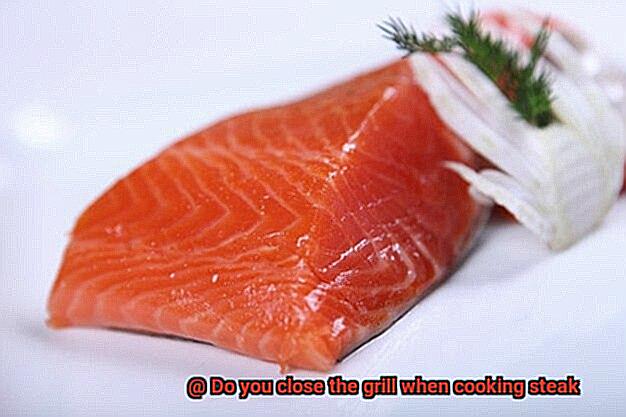
To achieve the perfect doneness, it is crucial to monitor the internal temperature of the steak. Different levels of doneness require specific temperature ranges.
Use a meat thermometer to regularly check the temperature and ensure that your steak reaches the desired level of doneness without overcooking.
For medium-rare, the internal temperature should be around 130°F. For medium, aim for 145°F. Remember to insert the thermometer into the thickest part of the steak for an accurate reading.
Resting for Tender and Juicy Results
After grilling, let the steak rest for a few minutes before slicing into it. This resting period allows the juices to redistribute throughout the meat, resulting in a tender and juicy final result.
Resting also helps to retain moisture in the steak, ensuring that every bite is flavorful and succulent.
Personal Preference and Experimentation
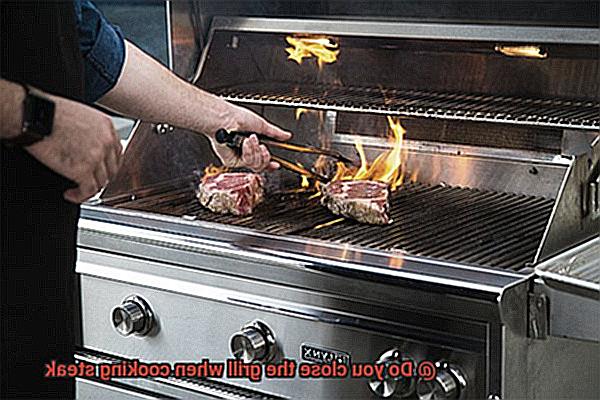
Ultimately, achieving the perfect doneness and flavor with a closed or open grill depends on personal preference and desired cooking results.
Consider factors such as the thickness of the steak, marbling, and desired level of char. Experiment with different techniques and flavors to find your preferred method for grilling the perfect steak every time.
The Best Way to Grill Steak for Different Cuts and Thicknesses
Grilling steak is an art form. It’s a tantalizing dance between fire and meat, a symphony of sizzling sounds and mouth-watering aromas. But to truly master this culinary masterpiece, one must understand the nuances of different cuts and thicknesses. Let’s dive into the world of grilling steak and uncover the best techniques for each variation.
For those thin cuts like flank or skirt steak, a high-heat grilling method is your ticket to flavor town. Picture this: flames dancing beneath the grate, heat radiating through the air, as you confidently place that thin slice of beef directly over the fiery source. A mere 3-4 minutes per side, a flip so graceful it rivals a ballet dancer’s pirouette. This swift cooking method forms a savory crust on the exterior while preserving tenderness within.
Now, let’s talk about the thick cuts, the kings of steakhouses – ribeye and filet mignon. These behemoths require a more sophisticated approach, a two-zone grilling technique that elevates their flavors to celestial heights. Imagine searing those majestic steaks over high heat, the grill lid closed to capture all the passion and energy within. The sizzle and crackle echo in perfect harmony with your taste buds’ anticipation. After a few minutes on each side, those charred edges are nothing short of a masterpiece. But we’re not done yet. Move these beauties to a cooler part of the grill, where indirect heat reigns supreme. Here they shall dwell until reaching your desired doneness – 130°F for medium-rare, 140°F for medium – until they surrender their succulent secrets.
But hold on. Before you embark on this culinary adventure, remember two golden rules. First, let your steaks bask in room temperature glory before grilling. This divine ritual ensures even cooking throughout and prevents any unwelcome surprises. Second, season generously. The steak gods demand it. Sprinkle that salt and pepper with reckless abandon or unleash your creative spirit with a custom blend of exotic spices. The choice is yours, but remember – flavor is the key to unlocking steak nirvana.
Ah, the final act – the grand finale of this grilling symphony. Let your steaks rest, a well-deserved respite after their fiery performance. A tent of foil loosely draped over their glistening bodies, allowing them to luxuriate in their own juices for 5-10 minutes. This divine intermission ensures that every bite is a tender revelation.
How to Prevent Flare-Ups and Charring When Cooking Steak on a Closed or Open Grill
To prevent flare-ups and charring when cooking steak on a closed or open grill, there are several techniques that can be followed.
Choose Lean Cuts of Steak
Choosing lean cuts of steak with less fat and marbling will reduce the likelihood of excessive dripping and flare-ups. Before grilling, trim any excess fat from the edges of the steak to further minimize flare-ups.
Preheat the Grill Properly
Properly preheating the grill is essential for preventing flare-ups. For a closed grill, preheat it to the desired temperature before placing the steak on the grates. For an open grill, ensure that the coals or burners are evenly distributed and at the correct temperature.
Use a Two-Zone Cooking Setup
Creating a two-zone cooking setup on your grill is an effective way to prevent flare-ups and charring. Start by searing the steak quickly on high heat to create a flavorful crust without excessive drippings causing flare-ups. Then, move the steak to a lower heat zone to continue cooking until it reaches the desired doneness.
Avoid Piercing or Pressing Down on the Steak
Piercing or pressing down on the steak while it is cooking can cause juices to escape and ignite on the grill, leading to flare-ups. Instead, use tongs or a spatula to gently flip the steak without piercing it.
Keep a Spray Bottle Filled with Water Nearby
In case flare-ups do occur, having a spray bottle filled with water nearby can help tame the flames quickly. Spritz water onto the flames to extinguish them, but be cautious not to add too much water at once, as it can cause a burst of steam.
4nhsg0zG-0E” >
Conclusion
In conclusion, the decision to close or leave open the grill when cooking steak is a matter of personal preference and desired outcome. Closing the grill offers a plethora of benefits. It ensures even heat distribution, retains moisture, develops intense flavors, cooks faster, prevents flare-ups, and allows for versatile cooking techniques. However, it’s important to consider the drawbacks as well. Closing the grill can result in slower cooking times, hindered charred grill marks and caramelization, reduced smoky flavor infusion, increased risk of steaming instead of grilling, and difficulty in accurately monitoring doneness.
When making the choice between closing or leaving open the grill, several factors should be taken into account. Consider the type of steak you’re cooking, your desired level of doneness, the cooking method you prefer, outdoor conditions such as wind or rain, and most importantly – your personal taste. Don’t be afraid to experiment with different techniques to find what works best for your palate.
To achieve perfection in doneness and flavor whether using a closed or open grill, it’s crucial to monitor internal temperature with a reliable meat thermometer and allow the steak to rest before slicing into it. Different cuts and thicknesses require different grilling techniques – thin cuts benefit from high-heat grilling while thick cuts thrive with a two-zone grilling setup.
To avoid flare-ups and excessive charring when grilling steak on either a closed or open grill, opt for leaner cuts of meat. Ensure proper preheating of the grill before placing your steaks on it. Utilize a two-zone cooking setup which creates both direct and indirect heat zones on your grill. Avoid piercing or pressing down on the steak while it cooks as this can cause juices to escape. Lastly, keep a spray bottle filled with water nearby in case any flare-ups occur.
Ultimately, becoming a master at grilling steak requires practice and experimentation. By understanding both the advantages and disadvantages of closing or leaving open the grill, and by considering various factors in your decision-making process, you can elevate your grilling skills and create mouthwatering steaks that will impress even the most discerning palates.

